High-yielding resistant cabbage hybrid Brigadier F1
Cabbage Brigadier F1 is often found in garden plots. The hybrid has earned the attention of gardeners due to its stable fruiting, unpretentiousness, and simple rules of agricultural technology. To obtain a bountiful harvest, it is worth familiarizing yourself with the nuances of growing this crop.
Description of cabbage hybrid Brigadier F1
The hybrid is intended for cultivation both in open ground and in closed greenhouse complexes. Cabbage is cultivated in garden plots and on an industrial scale.
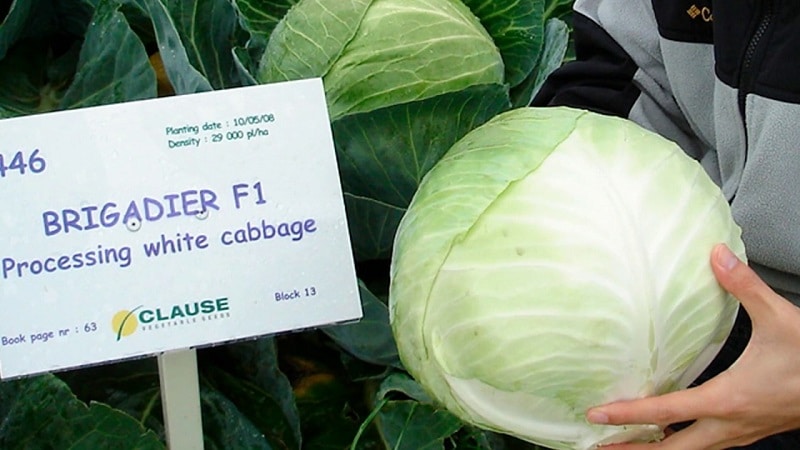
Origin and development
White cabbage Brigadier F1 is a first generation hybrid originally from France. The development was carried out by the agricultural company HM.CLAUSE S.A.
In 2010, Brigadier F1 was included in the State Register. Thanks to its characteristics, it gained popularity among domestic farmers and spread throughout all regions of the country.
Chemical composition, trace elements and vitamins, beneficial properties
Cabbage Brigadier F1 contains many minerals and vitamins with low calorie content. The composition includes B vitamins, folic and nicotinic acids, calcium, potassium, manganese, sulfur. The vegetable is also rich in fiber, which improves digestion.
Features of application
Due to the short inner stalk, there are no petioles on the main part of the leaves. Greens are particularly tender. The leaves are thin, juicy and crispy, so they are ideal for fresh consumption and cutting into salads.Even with coarse shredding, no hard parts of the petiole remain.
The leaves are also used in boiled, stewed, pickled, and pickled forms. For fermentation, the heads of cabbage are cut into halves or quarters. At the same time, they do not fall apart and do not become soft.
Cabbage Brigadier F1 is excellent for preparing cabbage rolls, pancakes and pies with various fillings, hot first and second courses: borscht, soups, casseroles, pancakes.
Ripening time and yield
Medium ripening hybrid. It enters the maturity stage in approximately 120-130 days.
The yield of cabbage Brigadir F1 is 10 kg per 1 sq. m. When cultivated in fields, it produces yields in the range of 430-700 c/ha.
Disease resistance
Brigadier F1 is one of the few hybrids that can withstand most cabbage diseases. Has strong immunity to fusarium. It is rarely affected by thrips. Leaves covered with a waxy coating are resistant to aphid attack.
Cold resistance
Cabbage is a cold-resistant plant. Seeds germinate already at +2…+3°С. Cabbage easily tolerates temperatures down to -9...-10°C and sudden temperature changes.
Appearance and taste
A leafy horizontal rosette is formed from large, slightly bubbly leaves. They are characterized by a bluish-green color and a waxy coating. The heads of cabbage are compact in size, spherical in shape and have a very dense structure. Their average weight is 3 kg. There are also large ones – up to 6 kg. In cross-section they appear monolithic. The pulp is white with a slightly noticeable green tint, the stalk is small.
Cabbage has excellent taste: juicy, crispy, sweetish, without bitterness.
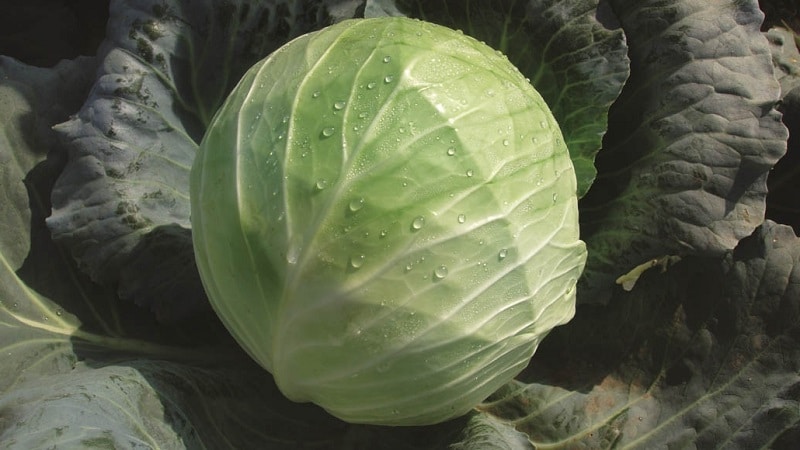
Suitable regions and climate requirements
The white cabbage hybrid Brigadir F1 is adapted for cultivation in regions of the Russian Federation with different climatic conditions. It is successfully cultivated even in the northern latitudes of the country. However, the originators recommended it for the North Caucasus region, where the crop demonstrates the highest yields.
Advantages and disadvantages of the hybrid Brigadier F1
Cabbage hybrid Brigadier F1 has become widespread due to the following characteristics:
- demonstrates high yields in various climatic conditions;
- unpretentious to growing conditions, which is determined by a well-developed root system;
- resistant to diseases and pests;
- has good shelf life (shelf life - up to 6 months);
- resistant to cold and temperature changes;
- does not crack;
- tolerates long-term transportation well;
- universal in use.
The only drawback is that the seeds cannot be used for planting next season, since the next generation will not inherit the characteristics of the mother plant.
Difference from other varieties and hybrids
Heads of cabbage are stored for a long time in beds, counters and cellars. When cleaned late, they do not lose their attractiveness and do not crack for 1-1.5 months.
Features of planting and growing
Cabbage Brigadier F1 is considered an unpretentious crop. However, compliance with the rules and conditions of its cultivation will ensure a decent harvest of healthy, juicy and tasty heads of cabbage.
Preparing for landing
Yield indicators largely depend on the quality of planting material and soil. It is worth pre-stocking with seeds purchased in specialized stores, taking into account the fertility of the soil and preparing it correctly.
Seeds
Cabbage seeds pre-disinfected. To do this, use "Epin". It is diluted according to the instructions, and the seeds are soaked in the prepared solution for 2 hours. They are then washed under running water.
Seedling
For the first 2 weeks, seedlings are kept at a temperature of +7 to +9°C. Then it is transferred to a room with a temperature of +14 to +18°C. On the 10th day, the plants are planted in separate containers, deepening to the cotyledon leaves.
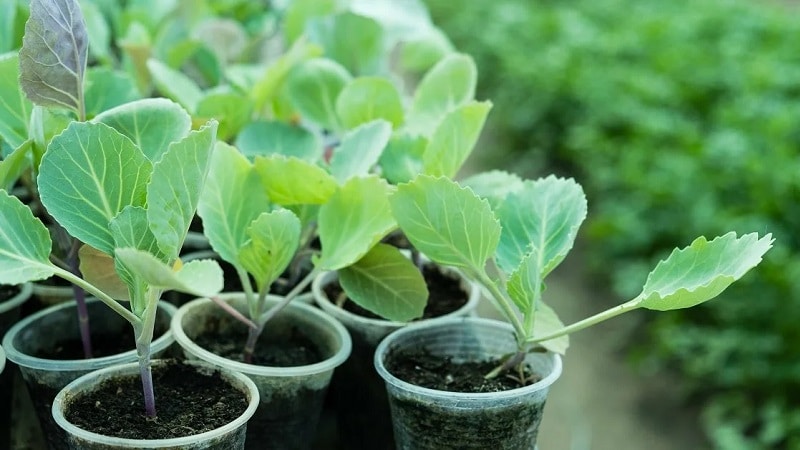
Non-seedling planting
When growing cabbage without seedlings, the harvest is obtained 12 days earlier. Prepare the bed by clearing weeds and insects using insecticides. Before planting, the seeds are disinfected. After the emergence of seedlings, the bed is thinned out, leaving only the strongest specimens.
Soil requirements
Although this hybrid is unpretentious, the soil must be fertile. When preparing the bed, the soil is mixed with humus and ash. The acidity of the area should be neutral or slightly acidic.
Predecessors
The best predecessors cucumbers, carrots, legumes, potatoes and tomatoes are considered. It is not advisable to plant cabbage in places where cruciferous vegetables grew last year.
Dates, scheme and rules of planting
At planting seedlings there should be 5-6 true leaves. If the weather is still cool, a film shelter is built over the garden bed. By this time the earth should warm up to +14°C.
Planting density and depth
When planted in a permanent place, plants are buried in the ground up to the top leaf. If necessary, after planting the top layer of soil is moistened. The minimum distance between plants is 40 cm.
Features of cultivation
If the soil on the site is clayey and heavy, sand is added to it.Too acidic soils are deacidified using dolomite flour. If the soil is unsuitable, the plants will not develop well.
Care consists of regular watering, fertilizing, loosening and treatment against diseases and pests.
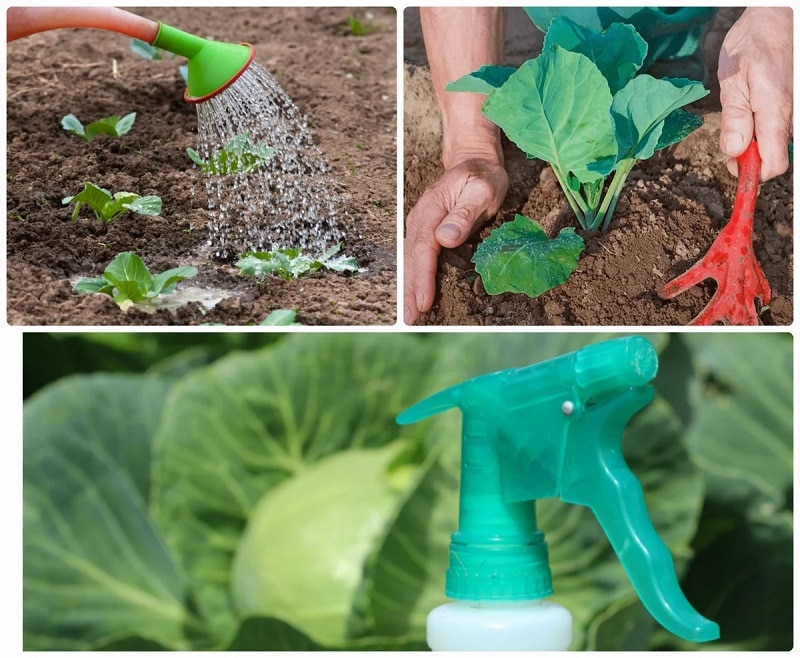
Watering mode
Water Brigadir F1 cabbage once a week. When the air temperature rises to +24°C, the frequency of watering is increased to 3 times a week.
Loosening and hilling
Loosening and hilling are carried out after each watering. Otherwise, the ground around the plant will become covered with a crust, preventing air from penetrating to the roots.
Feeding
First feeding is carried out 10 days after planting. Compost or humus is used for it. 400 g of fertilizer is applied to each plant.
Phosphorus is used to form inflorescences. This helps produce denser heads.
During fruiting, potassium nitrate is used. It helps to increase the yield and weight of the heads.
Measures to increase yield
To obtain a bountiful harvest, it is important that the soil is fertile. Also, in addition to the main fertilizers, foliar fertilizers are used. For this purpose, solutions of complex fertilizers are used.
Disease and pest control
The F1 Brigadier is famous for its unpretentiousness. Gardeners note that this cabbage is resistant to fusarium.
The likelihood of fungal diseases is reduced by pre-treating the seeds. Also, to prevent the appearance of other diseases and pests, the beds are regularly cleared of weeds and preventative treatment of the plantings is carried out. To do this, the plants are sprayed with Oxyx every week.
Difficulties in growing
The F1 Brigadier does not cause any particular difficulties during cultivation.This hybrid is moisture resistant and is slightly susceptible to pest attacks and diseases.
Harvest and storage
Hybrid Brigadier F1 is important to collect on time and send for storage under the right conditions. In this case, the heads of cabbage will last for several months.
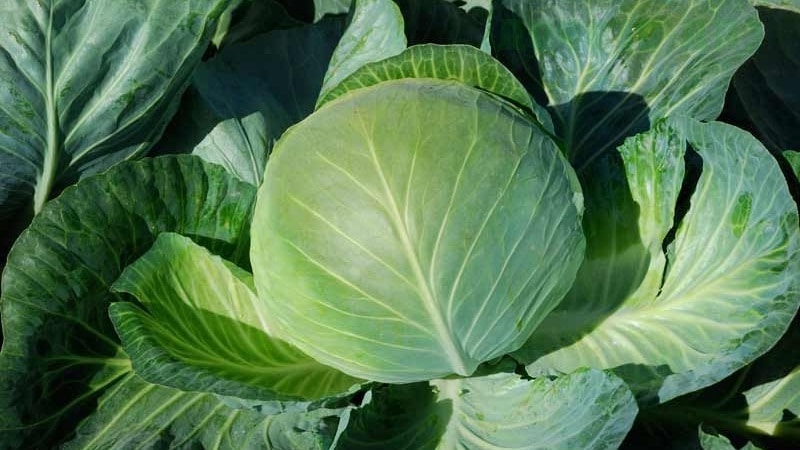
How and when to collect
3 weeks before harvesting, watering is stopped. Cabbage is harvested before frost arrives, since low temperatures have a bad effect on the quality of the heads of cabbage.
The heads are cut off using a well-sharpened knife, leaving a stalk 3 cm long. The collected cabbage is sorted, sorting the heads with mechanical damage, cracks, and signs of rot.
The heads of cabbage are put under a canopy for a day so that they dry out a little. Then cut off the stalk and transfer the forks to a dark, cool room. The most suitable storage temperature is from 0 to +2°C.
Important! The basement is pre-prepared for storage. It must be dried and treated with an antiseptic. If there are rodents, be sure to get rid of them.
Storage features and keeping quality of the hybrid Brigadier F1
Cabbage is placed on the floor or shelves. The surfaces are first covered with dry straw. Heads of hybrid Brigadier F1 can be stored for 5 months when creating optimal conditions.
Tips and reviews from experienced gardeners
Reviews from summer residents about Brigadir F1 cabbage are positive.
Anastasia, Belgorod: “For several years now I have been growing only the Brigadier F1 hybrid. Cabbage keeps well throughout the winter. At the same time, it is well suited for preparing salads and various hot dishes.".
Julia, Balashov: “The first time they imprisoned Brigadier F1 was 2 years ago. The hybrid gives a good harvest and does not require special care, which is especially important when there is a lack of time.Cabbage can be used for pickling and in salads. Even with long-term storage, the heads of cabbage have excellent taste.".
Conclusion
Cabbage Brigadier F1 is one of the most resistant hybrids to temperature changes, diseases and pests. It is used fresh, heat-treated and processed. The hybrid is unpretentious and high-yielding, stores well in the winter months.